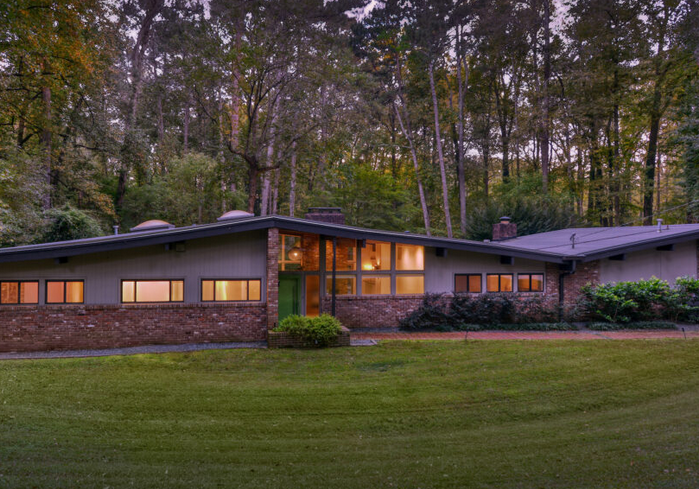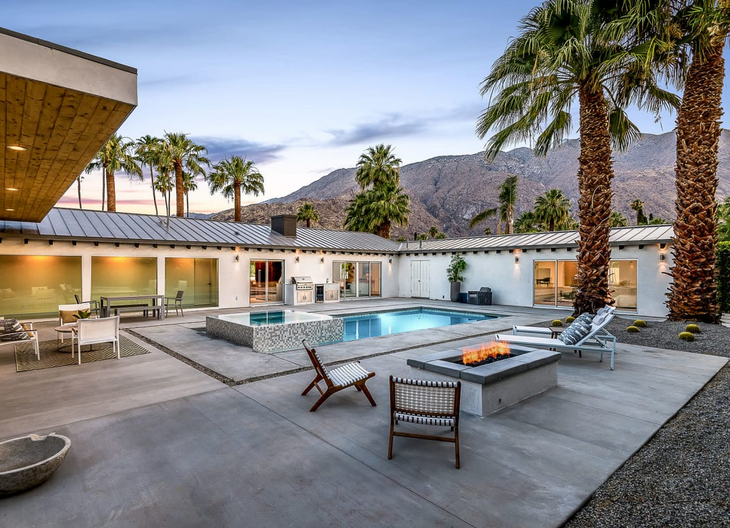Mid-century modern architecture, with its timeless elegance and functionality, continues to captivate and inspire designers, architects, and homeowners around the world. Originating in the mid-20th century, this architectural style is characterized by clean lines, open spaces, and a seamless integration between indoor and outdoor environments. Its enduring appeal lies in its emphasis on simplicity, organic forms, and a harmonious relationship with nature, making it a celebrated and influential design movement that has stood the test of time.

Emphasis on Functionality and Simplicity
Mid-century modern architecture adheres to the principle of “form follows function,” prioritizing the practical needs of the inhabitants. The clean, uncluttered lines and minimalist aesthetic reflect a focus on simplicity and an aversion to ornate decoration, creating spaces that are both visually appealing and highly functional.
Integration of Indoor and Outdoor Spaces
A hallmark of mid-century modern architecture is the integration of indoor and outdoor living. Expansive windows, glass walls, and open floor plans blur the boundaries between interior and exterior spaces, allowing for a seamless transition and a sense of continuity with the natural surroundings.
Organic Forms and Natural Materials
The use of natural materials such as wood, stone, and glass is central to mid-century modern design. These materials, often left in their natural state, contribute to a warm, inviting atmosphere and a connection to the surrounding environment. The emphasis on organic shapes and forms creates a visual rhythm that offers a sense of harmony and balance.
Innovative Construction Techniques:
Mid-century modern architecture often incorporates innovative construction techniques and materials, showcasing the technological advancements of the era. Architects and designers experimented with new building materials and construction methods, embracing modern technologies and industrial materials to create sleek and forward-thinking designs.
Timeless Design Elements
Many design elements associated with mid-century modern architecture, such as the iconic Eames chair, Nelson pendant lights, and Noguchi coffee table, have become timeless classics that remain highly sought after in contemporary interior design. The enduring popularity of these design elements speaks to the timeless appeal of mid-century modern aesthetics.
Affordability and Accessibility
Mid-century modern architecture was often designed to be accessible and affordable, reflecting a democratic approach to design. The emphasis on functionality and a reduction of unnecessary ornamentation made this style accessible to a wide range of homeowners, contributing to its widespread popularity.
Influence on Contemporary Design
Mid-century modern architecture continues to influence contemporary design trends, inspiring architects, interior designers, and furniture designers. Its timeless appeal and adaptable design principles have transcended generations, making it a lasting and influential movement in the world of architecture and design.
Conclusion
In conclusion, mid-century modern architecture’s enduring appeal lies in its emphasis on simplicity, functionality, and a seamless connection to the natural environment. Its timeless elegance and forward-thinking design principles continue to shape the way we approach architecture and design, celebrating the beauty of clean lines, organic forms, and harmonious integration of indoor and outdoor spaces.
